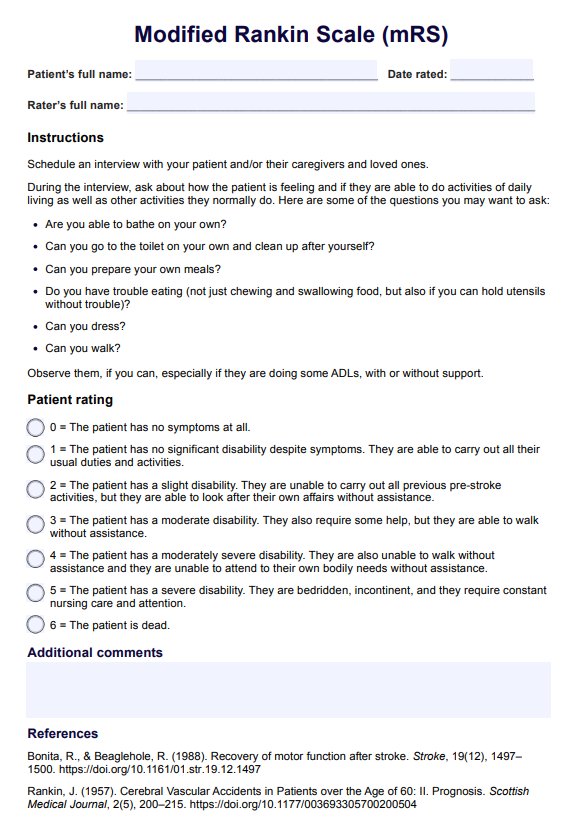Yes, but it can be used to assess a patient with a different neurological disability, such as traumatic brain injury, cerebral palsy, multiple sclerosis, or problems caused by cerebral vascular accidents.

Modified Rankin Scale (mRS)
If you are dealing with a patient who had a stroke or some other neurological injury, you can use the Modified Rankin Scale (mRS) to assess their functional status! Learn more about the scale through this guide.
Modified Rankin Scale (mRS) Template
Commonly asked questions
It depends on how you look at it. It can only take a second because you're simply picking a number. However, it can take you up to ten minutes if you take the time to weigh the information you got from interviewing your patient or the patient's companion and from observing the patient.
Considering the interview and the observation parts, the amount of time you will spend on both will vary from patient to patient. Just don't be surprised if it takes you an hour. You are dealing with a patient impacted by a neurological problem, after all.
That depends on your team's care plan. You can go with monthly, quarterly, every half-year, or annually. Weekly might not be the best way to go about it because you can expect that progress might take a while to show.
EHR and practice management software
Get started for free
*No credit card required
Free
$0/usd
Unlimited clients
Telehealth
1GB of storage
Client portal text
Automated billing and online payments











